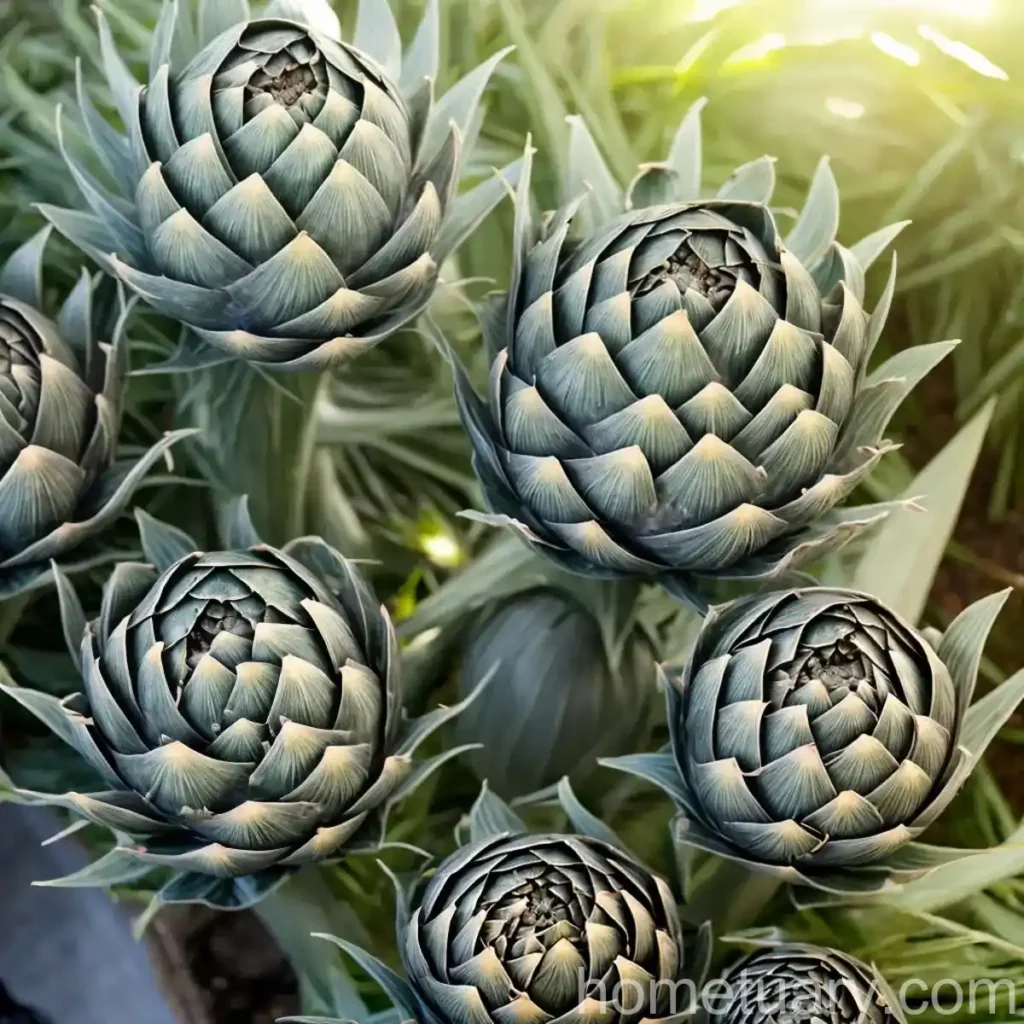The Fascinating World of Artichokes
Introduction
Artichokes, scientifically known as Cynara cardunculus (Scolymus Group), are unique and intriguing plants that have been cherished for centuries for their culinary and medicinal benefits. In this comprehensive guide, we will delve into the intricacies of the artichoke plant, exploring its cultivation, uses, benefits, and more.
Plant Name: “Artichoke (Cynara cardunculus (Scolymus Group)”
Key Takeaways
– Cynara cardunculus Scolymus Group: It is the scientific classification of the artichoke plant, which falls under the Cynara cardunculus species and Scolymus Group variety.
– Artichoke Varieties: The artichoke comes in different varieties, each with its unique characteristics and culinary uses.
– Artichoke Planting Guide: Understanding the optimal conditions and methods for planting artichokes.
– Tips for Growing Artichokes: Key insights to help ensure a successful artichoke cultivation experience.
– Artichoke Care: The essential care practices required to maintain healthy and vibrant artichoke plants.
– Preserving Artichokes: Techniques for preserving artichokes to prolong their shelf life.
– Artichoke Medicinal Benefits: Exploring the potential health benefits associated with consuming artichokes, including their medicinal and nutritional value.
What is Plant: Artichoke (Cynara cardunculus (Scolymus Group))
Artichoke Culture
Artichokes are perennial plants that belong to the thistle family (Asteraceae) and are primarily cultivated for their edible flower buds. Originating from the Mediterranean region, including southern Europe, North Africa, and the Canary Islands, artichokes have been valued for their culinary and medicinal properties since ancient times. The botanical name Cynara cardunculus encompasses several groups within the species, each with its distinct characteristics and uses. The Scolymus Group specifically refers to the globe artichoke variety, which is cultivated for its flavorful and tender flower buds.
Artichoke Uses
The artichoke plant boasts a wide array of uses, making it a versatile and valuable addition to both gardens and kitchens. Some of the primary uses of artichokes include:
-
Culinary Purposes: Artichokes are celebrated for their delectable, tender hearts and fleshy, flavorful leaves. They are commonly utilized in various culinary creations, including salads, dips, and casseroles, adding a unique and savory dimension to dishes.
-
Medicinal Benefits: Beyond their culinary applications, artichokes are reputed for their potential health benefits. From liver support and cholesterol management to antioxidant properties and digestive aid, artichokes have long been associated with an array of therapeutic and medicinal effects.
Artichoke Plant Care Guide
Artichokes, when provided with the appropriate growing conditions and care, can thrive and yield an abundant harvest of delicious, nutritious flower buds. Let’s explore the key aspects of artichoke plant care.
Water
Proper irrigation is crucial to the health and productivity of artichoke plants. While they are relatively drought-tolerant once established, consistent moisture is essential, especially during their active growing seasons. It is recommended to provide approximately 1-1.5 inches of water per week, ensuring the soil is evenly moist but not waterlogged.
Sunlight
Artichokes thrive in full sun, requiring a minimum of 6-8 hours of direct sunlight each day. Optimal exposure to sunlight promotes robust growth, enhances flower bud production, and contributes to the overall vigor of the plants.
Fertilizer
To support the nutrient requirements of artichoke plants, it is beneficial to provide them with a balanced fertilizer. A general-purpose organic fertilizer or a formulation specifically designed for flowering plants can be applied during the growing season. Additionally, a layer of organic mulch can be utilized to enrich the soil, retain moisture, and inhibit weed growth.
Soil
Artichokes prefer well-draining, fertile soil with a slightly acidic to neutral pH level. Amending the soil with organic matter, such as compost, can enhance its fertility and structure, providing an optimal environment for the development of healthy artichoke plants.
Pruning
Regular pruning and maintenance are essential for promoting the productivity and longevity of artichoke plants. Removing spent flower buds, dead or damaged leaves, and maintaining a tidy growth habit facilitates airflow, reduces the risk of disease, and encourages the development of new flower buds.
Propagation
Artichokes can be propagated through various methods, including division, seed sowing, and root division. Each approach has its unique considerations and requirements, allowing for flexibility in propagating new artichoke plants to expand or replenish a garden.
Container Popularity
While artichokes are commonly grown in garden beds, they can also thrive in containers, making them a versatile choice for individuals with limited garden space. When grown in containers, it is essential to select a large, sturdy pot that provides ample space for the plant’s root system and top growth.
Common Diseases and Pests
Common Diseases
Artichoke plants are susceptible to certain diseases, some of which can impact their growth and overall health. Understanding these common diseases and their symptoms can aid in early detection and appropriate intervention. Some of the prevalent artichoke diseases include:
-
Powdery Mildew: This fungal disease manifests as a white, powdery growth on the leaves, eventually leading to leaf yellowing and distortion.
-
Botrytis Blight: Also known as gray mold, this disease can cause stem and bud rot, particularly in humid conditions.
Disease Diagnosis
To accurately diagnose and manage artichoke diseases, it is crucial to closely monitor the plants for any signs of abnormality, including leaf discoloration, wilting, or unusual growth patterns. Consulting with a plant health professional can aid in the identification of specific diseases and the implementation of effective control measures.
Common Pests
Artichokes can also fall victim to various pests that pose a threat to their vitality and productivity. Some of the common pests that may affect artichoke plants include:
-
Aphids: These small, sap-sucking insects can congregate on the undersides of leaves, causing stunted growth and deformation of plant tissues.
-
Snails and Slugs: These voracious feeders can inflict significant damage to artichoke foliage and flower buds, particularly in moist environments.
Botanist’s Tips for Successful Artichoke Cultivation
Ideal Growing Conditions for Artichokes
Providing artichokes with optimal growing conditions is paramount to their success. The following factors contribute to the overall health and productivity of artichoke plants:
-
Temperature: Artichokes thrive in moderate climates, preferring temperatures within the range of 60-75°F (15-24°C). Consistent, moderate temperatures promote robust growth and flowering.
-
Soil Moisture: While artichokes are relatively drought-tolerant, maintaining consistent soil moisture, especially during the active growing period, is crucial. Adequate moisture supports healthy foliage and the development of flavorful flower buds.
-
Soil Quality: Well-draining, fertile soil with a slightly acidic to neutral pH level is conducive to artichoke growth. Amending the soil with organic matter can enhance its fertility and structure.
Challenges of Growing Artichokes
Despite their numerous benefits, artichokes present certain challenges that require careful consideration and management. Some of the common challenges associated with growing artichokes include:
-
Climate Sensitivity: Artichokes are sensitive to extreme temperatures, particularly frost. In regions with harsh winters, protective measures such as mulching and covering can help safeguard the plants from cold damage.
-
Pest and Disease Management: Vigilance is essential in monitoring artichoke plants for signs of pests and diseases, enabling prompt intervention and control measures to preserve plant health.
Winter Care for Artichoke Plants
During the winter months, providing appropriate care for artichoke plants is pivotal in ensuring their survival and vigor. To safeguard artichokes from the potential hazards of cold temperatures and inclement weather, the following winter care practices are recommended:
-
Mulching: Apply a layer of organic mulch around the base of the plants to insulate the roots and protect them from frost.
-
Protection: In regions with severe winters, consider covering artichoke plants with frost blankets or cloches to shield them from the cold and adverse weather conditions.
Artichokes in Containers
Container Common Diseases
Artichokes grown in containers may be susceptible to diseases that are exacerbated by the confined environment and potentially limited airflow. Common container-specific diseases may include:
-
Root Rot: Excessive moisture retention in container soil can lead to root rot, potentially compromising the health and vitality of artichoke plants.
-
Powdery Mildew: Fungal diseases such as powdery mildew can thrive in the relatively humid microclimate within containers, impacting the foliage of artichokes.
Artichoke as an Ornamental Plant
In addition to their culinary significance, artichokes also offer ornamental value, gracing gardens with their striking foliage and intriguing flower buds. The bold, architectural form of artichoke plants can contribute to the aesthetic appeal of garden landscapes and provide a visually captivating focal point.
Artichoke Symbolism
The artichoke has been symbolically associated with various meanings and representations across different cultures and periods. From attributes of strength and protection to themes of hope and prosperity, the artichoke carries diverse symbolism that adds depth and significance to its presence in art, literature, and cultural traditions.
Fun Facts about Artichokes
-
Historical Significance: The cultivation and consumption of artichokes date back to ancient times, with evidence of their presence in the diet of ancient civilizations such as the Greeks and Romans.
-
Edible Flower Buds: The edible part of the artichoke plant is the immature flower bud, which is harvested before it fully blooms.
-
Culinary Versatility: Artichokes lend themselves to a wide range of culinary creations, from appetizers and side dishes to main courses and gourmet delicacies, showcasing their remarkable culinary versatility.
-
Thorny Heritage: The artichoke is a member of the thistle family, characterized by its spiky, thorn-tipped leaves and a robust, enduring nature.
Links to External Resources
To further enhance your knowledge and appreciation of artichokes, explore the following external resources:
-
The Artichoke Foundation: An organization dedicated to promoting awareness and education about artichokes, including their culinary, medicinal, and cultural significance.
-
Artichokes: Benefits, Recipes, and More: A comprehensive guide to the benefits, recipes, and nutritional value of artichokes, presented by Vegetarian Times.
-
Artichoke Cultivation Guide: The Old Farmer’s Almanac provides valuable insights into the cultivation and care of artichokes, offering practical tips for successful plant maintenance.
-
Artichoke: A Culinary Delight: Delve into the world of artichoke-inspired culinary delights with resources and recipes from Food Network.
In conclusion, the artichoke plant, with its rich history, diverse uses, and potential health benefits, stands as a captivating and rewarding addition to gardens and culinary experiences. By understanding the nuances of artichoke cultivation, care, and utilization, individuals can fully appreciate and harness the remarkable attributes of this esteemed plant.
Remember to embrace the multifaceted nature of the artichoke, whether as a source of delectable culinary creations, a symbol of cultural significance, or a potential contributor to holistic well-being. Let the artichoke, with its allure and depth, enrich and inspire your journey in gardening, gastronomy, and beyond.
This comprehensive guide takes an in-depth look at the diverse aspects of artichoke plants, ranging from their cultivation and care to their culinary and medicinal significance. The information is thoughtfully structured, ensuring that readers gain valuable insights into the captivating world of artichokes and how they can be embraced in various spheres of life. The inclusion of fun facts, external resources, and actionable tips further enhances the reader’s understanding and engagement with the subject matter, offering a well-rounded and informative exploration of artichokes.















